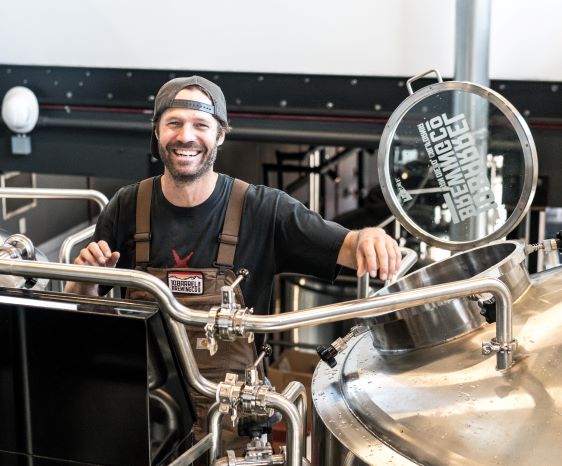Leading the Agile Organization
“62% of leaders we surveyed didn’t want to lead, but incentives lead them to take a promotion” Michael C. Bush
This is a quote from Michael C. Bush, who recently took part on the HBR Webinar “Leading the Agile Organization”. I thought this was a really interesting insight, and very telling.
In my perception if you want to create an agile organisation (ie nimble not Agile©) you need great leaders. If a person doesn’t want lead, they are going to struggle to execute the leadership needed to thrive in a complex and changing environment.
The webinar hosted a pretty interesting discussion and worth a watch for those interested in the building agile/nimble organisations. However, for me the discussion posed a lot of questions as to how you achieve nimbleness and not a lot of solutions.
So let me give you some tips on organisational agility.
Agility is:
- The ability to quickly start doing something
- The ability to quickly stop doing something
- The ability to change direction
- The ability to transition quickly and smoothly between these states.
As John Boyd the famous military strategist once said “He who can handle the quickest rate of change survives.”
So how do you create an organisation that is capable of doing these things and survive the stress that this causes?
5 tips for Leading the Agile Organisation
So here are 5 things you can do if you are looking to build an organisation that is nimble and agile. (NB this is different from the practice of Agile software development). Credit for these 5 tips goes to Chet Richards via Certain to Win (Link below) and John Boyd. With my own twist.
- Intuitive Competence. (Expertise & Pattern Recognition)
- Mutual Trust & Cohesion. (Shared Values)
- Strategic Alignment. (Focus of main effort)
- Empowered Execution. (Leading by intent)
- Mental / Physical Agility. (Take apart & Put together)
1. Intuitive Competence. (Expertise & Pattern Recognition)
This is what is often referred to as Expert Judgement in the academic literature. This is expertise built up over time.
It allows you recognise patterns in your environment. This then allows you to implement the right actions at the right time, but also to implement them well. This is what is often referred to as Fingerspitzengefühl (finger tip feeling).
It is hard to be agile without being competent. It is hard to be agile if you are a noobie.
2. Mutual Trust & Cohesion. (Shared Values)
It is hard to underestimate how important mutual trust and cohesion are to agile organisations. Take a look at agile units in the military, mutual trust and unit cohesion is at the centre of teams.
Operating in VUCA (volatility, uncertainty, complexity, and ambiguous) and being agile requires risk taking. People are less willing to take the necessary risks if they believe they are going to be hung out by their colleagues or bosses.
The military spends huge amount of time building unit cohesion.
If you want to be innovative, then you need to try new things and new ideas. But no one is going to stick their neck out if they don’t feel their boss or co-worker has their back. This is why Google in their study of successful teams put psychological safety as #1 on their list.
Chet Richard’s uses the word German word Einheit to describe this characteristic, which literally translates to English as Unity.
- Strategic Alignment. Focus of main effort
“The best laid schemes o’ mice an’ men / Gang aft a-gley.” Robert Burns
The idea is; no matter how carefully a project is planned, something may still go wrong with it. This is what Robbie burns is saying in this line above in his poem “to a mouse”. In complex environments you can’t predict what is going to happen – so don’t plan too much.
To be agile at scale you should align people by creating a common focal point that people should work towards. In the military this concept is called Schwerpunkt.
Schwerpunkt is the idea of creating simple heuristics that should drive behaviour. Examples include “March to the sound of the guns” was an order given by French General Marshal Grouchy before the Battle of Wavre in 1815.
Creating common purpose and focus of effort is key to building agile organisations.
Take for example a team that team must make a decision in the face of uncertainty and with little time to think. How do they make the best choice?
They sit on the best information and are the best informed about the problem they face. How should they proceed? Which way should they choose?
Well the decision that moves them one step closer to the common purpose and shared goal, whatever it maybe. Initiative of workers can be harmonized and aligned this way.
Stephen Bungay calls this the idea of “Tell me what you want, what you really, really want”. He is British so he is, of course, a fan of the Spice Girls.
The Toyota Production System is also a good example of this.
“The Toyota Production System, quite simply, is about shortening the time it takes to convert customer orders into vehicle deliveries.” Toyota Motor Co., Page 2 of the Toyota Production System.
4. Empowered Execution. (Leading by intent)
Retired 4 star General Stanley McChrystal, who I have had the honour of meeting, calls this Empowered Execution. It has many names, Leading by intent. Intent-based Leadership, Mission Command, Mission-type tactics, Auftragstakitkk.
Derived from the military, it is a style of leadership, which combines centralized intent with decentralized execution subsidiarity and promotes freedom and speed of action, and initiative, within defined constraints.
Here are some guidelines courtesy of this article:
- Orders must be given based on intent and the intent must be understood.
- Proper guidance and support is given to those below in the hierarchy. Support can come in the form of resources, experience, information sharing, etc.
- Leaders are trained to act independently. They must learn to use their own initiative and creative problem-solving skills.
- Give no more orders than are essential. Each additional order is seen as a constraint upon the subordinate managers.
- Be absolutely clear in expressing what your intent is. As intent can be very generic, there can be no ambiguity in what you as a leader intend on happening.
Doing empowered execution is as much about creating the right culture as it is of communicating orders correctly and holding briefings. They are mutually dependent.
This style of leadership requires highly capable leaders. If you are one of the 62% mentioned by Michael C Bush above, you might struggle with this one.
5. Mental / Physical Agility. (Take apart & Put together)
By physical agility I am talking about the ability to pull apart and put together and combine physical things like human and technological resources.
Consultancy firms are very good at doing this. Each consulting team is thrown together and task organised based upon each client engagement. On the next engagement a new, most suitable team is put together.
Agility in here is the speed at which you can start doing something and change direction but also STOP doing something. This abrupt change can be brutal for individuals. Thus:
”[S]He who can handle the quickest rate of change survives.” John Boyd.
Mentally or conceptually it represents the idea of breaking out of patterns. It is encapsulated by the cliche of “what got you here, won’t get you there”. Barry O’Reily has even written a book about this called Unlearn.
If you are mentally agile you can foresee change, break concepts apart (analysis) and put them back together (synthesis).
Bringing it all together:
So here are the concepts in one pretty picture, when you bring them together:
Video link https://vimeo.com/314339205
What if you’re interested in learning more?
Check out these books
- Certain to Win: The Strategy of John Boyd, Applied to Business, by Chet Richards
- The Art of Action: How Leaders Close the Gaps between Plans, Actions and Results, by Stephen Bungay
- State of Readiness: Operational Excellence as Precursor to Becoming a High-Performance Organization, by Joseph F. Paris Jr.
- Team of Teams: New Rules of Engagement for a Complex World, by General Stanley McChrystal
By Frederick Fladmark








